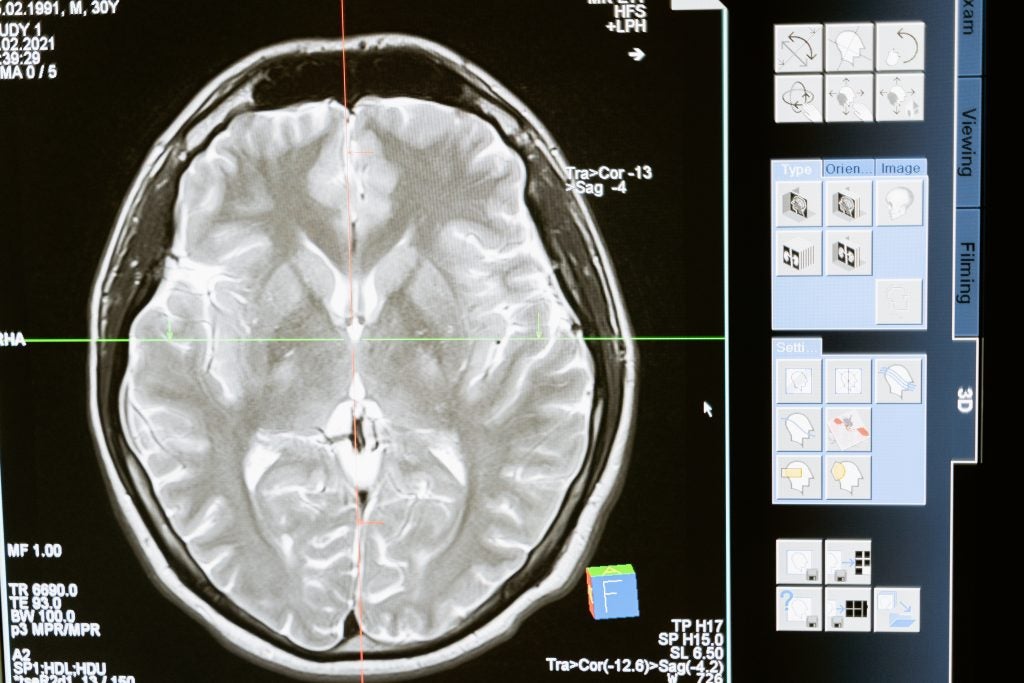
Frotteurism, also known as frotteuristic disorder, is defined as a paraphilia in which a person is sexually aroused by the act or fantasy of making unwanted — and often unrecognized — physical contact with others, generally while in public spaces.1 Because frotteuristic acts usually take the form of rubbing oneself on an unsuspecting person, it is often confused with frotting (also called fencing) which is a slang term for masturbating by rubbing two penises together.2, 3
However, frotteurism and frotting are not the same thing, in part because they are different acts, but also because frotteurism is almost always non-consensual. A person targeted by a frotteur is a victim of frotteurism, while frotting is a consensual activity between two individuals.3
Table of Contents
What is Frotteurism?
The term frotteurism is derived from the French word frotter, which means “to rub.” 4 Frotteuristic acts were first studied and interpreted by French psychiatrist Valentin Magnan in 1887 as signs of psychological disorder.5 The term was later popularized by a German sexologist named Richard von Krafft-Ebing in his book Psychopathia Sexualis. 6

Also called frottage, the act of rubbing against other unsuspecting persons most commonly occurs in public, crowded areas in which victims are more likely to assume that the physical contact is accidental or unintentional.3
Frottage also occurs in public situations so that perpetrators can more easily escape without being detected. Settings typically include malls, elevators, escalators, busy sidewalks, and public transportation vehicles.3 However, frotteuristic acts are not limited to these locations and can occur anywhere.
Most commonly, frottage takes the form of the assailant rubbing their genitals against the victim’s thighs or buttocks. Other times, frotteurs will rub their hands on the genitals or breasts of their victims. Some frotteurs wear wraps around their genitals to mask any evidence of ejaculation resulting from the contact. Such wraps have been used as evidence to prove intent to commit acts of frotteurism in criminal cases. The most “extreme” frotteurs may also masturbate directly onto their victims.
Diagnosing Frotteuristic Disorder
Most people with frotteuristic disorder never seek professional help and therefore do not receive an official diagnosis. Like many other compulsive behaviors or addictions, in order to be diagnosed, the individual must first identify that there is a problem they wish to address.
According to the Diagnostic and Statistical Manual, frotteurism is considered a mental disorder if (1) intense and recurrent sexual arousal from rubbing against non-consenting persons, as manifested by behaviors, urges, or fantasies has occurred over a period of at least six months and if (2) the fantasies, sexual urges, or behaviors cause clinically significant distress to oneself or others, or impairment in social, occupational, or other important areas of functioning.7, 8
Unfortunately, frotteurism is most often diagnosed when individuals are mandated by courts to seek psychiatric care after being arrested for sexual assault. 9 Frotteurism is extremely underdiagnosed because an official diagnosis — due to acknowledgment of non-
consensual behaviors — often results in misdemeanor criminal charges.3 Similarly, charging a person with frotteuristic behavior is exceedingly difficult because the defense statements of the accused typically claim that any physical contact was accidental, and unfortunately there is no way to prove a person’s intent to touch.3
Who is the Typical Frotteur?
Because frotteurism is usually a rapid act and people do not typically admit to predatory behavior, there is not a wealth of data on those who participate in the act. However, the available information does show that most perpetrators are males aged 15-25 years.3 Frotteurism has also been found to be most common among older, shy, and socially or sexually inhibited individuals. In addition, while most groping incidents are carried out by dedicated, persistent frotteurs, there are cases of otherwise “conventional” people engaging in frotteurism.7
Among those diagnosed with paraphilic disorders, 10-14% have frotteurism.10 While the exact prevalence of frotteuristic behaviors is unknown, from the information that is available, it appears that nine to 35 percent of the general population has engaged in frotteuristic behavior.10, 11 In addition, the majority of those with frotteurism are males, and while there is a small percentage of female frotteurs, these cases are very rare.10 The target victims of frotteurs are typically younger females, but older women are also targeted.12
Causes of Frotteuristic Disorder

There is no general consensus in the field of sexology about what causes frotteurism. However, a few theories do exist:
- An incident occurred in which the individual accidentally rubbed up against someone in a crowded area and became aroused, thus causing such an activity to become a conditioned stimulus for sexual arousal.
- Differences in the brain of a frotteur exist that cause a lack of impulse control.
- Negative childhood experiences, including sexual abuse, may have led to the development of the sexual disorder.
For frotteurs, the need to rub against other people in a sexual way is a proxy of cuddling for affection — like an infant to its mother.13
Additionally, as previously mentioned, frotteurism can be considered a part of courtship disorder. In this framework, frotteurism is, for the paraphile, the equivalent to “heavy petting” or foreplay. Though many people have likely experienced the urge to touch a person that they find attractive or identify as an easy target that they see in public, persistent performance of these urges qualifies them as a paraphilia.14
Like many other paraphilias, causes of frotteurism likely depend on the individual rather than a common experience or characteristic factor.15 Experts of paraphilic behavior typically attribute persistent acts of frottage to an initial random touching event or accidental groping that the perpetrator found sexually exciting. After the initial event, successive instances of frotteurism reinforce the predatory behavior.3 Also like many other paraphilias, frotteuristic behavior has been associated with other mental health issues, including depression, anxiety, and low self-esteem.16, 17 Fortunately, the treatment of these and other concurrent mental illnesses can also be successful in treating frotteuristic disorder.
Treatment
Treatment of frotteurism typically involves psychotherapy, cognitive behavioral therapy, solution-focused therapy, psychoanalysis, relaxation therapy, and biofeedback.9,13 Through therapy, frotteurs can learn to control the impulse to touch non-consenting victims. In addition, medroxyprogesterone acetate, a predominantly female hormone, and antidepressants are sometimes prescribed to decrease sexual desire. 9, 14 Unfortunately, there exists little reliable information on treatment success rates at present. Additionally, most frotteurs never receive treatment, and those who do usually only do so after it is mandated by a court as a result of being arrested for sexual assault. In most cases, in order for treatment to be successful, the frotteur has to actively want to change their behavior.15
Because treatment is not always successful, many frotteurs never receive treatment at all, and most frotteurs are able to get away with frottage, the prognosis for successfully eliminating frotteurism through treatment is poor.3 Additionally, according to some theories of paraphilia, there is no way to effectively eliminate paraphilic desires.14 Therefore, those who engage in frotteurism may want to consider seeking out communities and individuals who are willing to engage in consensual frotteuristic roleplay scenarios.
Frotteurism is considered a form of sexual assault and a criminal act. If you suspect that you may have a frotteuristic disorder, seek help from your healthcare provider or a mental health professional as soon as possible. It is meaningful to keep in mind that your disorder is not your fault and that you deserve proper treatment for the safety and comfort of both yourself and others.
Resources
The following is a list of resources for individuals afflicted with frotteurism or frotteuristic urges that are seeking treatment and victims of frottage:
- Project Know is a directory of resources, therapists, and treatment centers for people struggling with addiction or behavioral health disorders. Call: 1-888-892-1840.
- The National Helpline for Men Who Were Sexually Abused or Assaulted is a free and anonymous helpline for male-identifying persons who have experienced sexual abuse or assault and their loved ones.
- Sex Addicts Anonymous is a fellowship open to all people who have a desire to stop addictive sexual behavior. Call: 1-800-477-8191.
- The National Sexual Assault Hotline is a safe, confidential service that connects survivors of sexual assault to trained staff members from sexual assault service providers in their areas. Call: 1-800-656-4673.
- The National Alliance on Mental Illness is a grassroots mental health organization focused on helping Americans affected by mental illness build better lives. Call: 1-800-950-6264.
If you are struggling with frotteuristic urges or have been a victim of frotteurism, we highly recommend utilizing the above resources.
Concluding Remarks
Frotteurism, one of several paraphilias, involves intense fantasies, urges, and sexual arousal centering around the act of touching unsuspecting and non-consenting persons, generally in public spaces. It is classified as a mental disorder if frotteuristic behavior persists for a period of longer than six months and causes significant distress to oneself or others. Unfortunately, most people afflicted with frotteuristic disorder never receive an official diagnosis or treatment. However, there are numerous resources available to both frotteurs seeking help and victims of frotteuristic behavior.
References
- Blaney, Paul H., and Theodore Millon. Oxford textbook of psychopathology. Oxford University Press, 2008.
- Henneman, Todd. “The New Sex Police.” The Advocate. No. 936. Here Publishing: Apr 12, 2005.
- Rösler, A, and E Witztum. “Pharmacotherapy of paraphilias in the next millennium.” Behavioral sciences & the law vol. 18,1 (2000): 43-56.
- Janssen, Diederik. ““Frotteuristic Disorder”: Etymological and Historical Note.” Archives of Sexual Behavior 47.4 (2018): 821-24. Web.
- Laws, Richard D, et al. Sexual Deviance: Theory, Assessment, and Treatment. New York: Guilford Press, 2008. Print.
- Krafft-Ebing, Richard. Psychopathia Sexualis. Philadelphia: F.A. Davis Co, 1892. Print.
- Diagnostic and Statistical Manual of Mental Disorders: DSM-5. 5th ed. Washington, D.C.: American Psychiatric Association, 2013. Print.
- Långström, Niklas. “The DSM diagnostic criteria for exhibitionism, voyeurism, and frotteurism.” Archives of sexual behavior vol. 39,2 (2010): 317-24.
- “Frotteuristic Disorder.” Psychology Today. Sussex Publishers: 3/28/2019
- Clark, Stephanie K et al. “More Than a Nuisance: The Prevalence and Consequences of Frotteurism and Exhibitionism.” Sexual abuse : a journal of research and treatmentvol. 28,1 (2016): 3-19.
- Johnson, R Scott et al. “Prevalence and treatment of frotteurism in the community: a systematic review.” The journal of the American Academy of Psychiatry and the Law Vol. 42,4 (2014): 478-83.
- Kafka, Martin P, and John Hennen. “A DSM-IV Axis I comorbidity study of males (n = 120) with paraphilias and paraphilia-related disorders.” Sexual abuse : a journal of research and treatment vol. 14,4 (2002): 349-66.
- Bhatia, Kamal. and Utsav Parekh. “Frotteurism.” StatPearls, StatPearls Publishing, 28 October 2020.
- LeVay, Simon, Janice I. Baldwin, and John D. Baldwin. Discovering Human Sexuality. 2nd ed. Sunderland, MA: Sinauer Associates, 2012. Print.
- Jordan, Kirsten et al. “The role of testosterone in sexuality and paraphilia–a neurobiological approach. Part II: testosterone and paraphilia.” The journal of sexual medicine vol. 8,11 (2011): 3008-29.
- Abel, G G et al. “Multiple paraphilic diagnoses among sex offenders.” The Bulletin of the American Academy of Psychiatry and the Lawvol. 16,2 (1988): 153-68.
- Kalra, Gurvinder. “The depressive façade in a case of compulsive sex behavior with frottage.” Indian journal of psychiatry vol. 55,2 (2013): 183-5.
- “Frotteuristic Disorder.” Psychology Today. Sussex Publishers: 3/28/2019
Last Updated: 5/27/21
